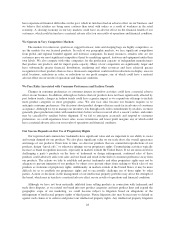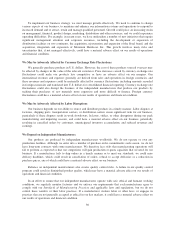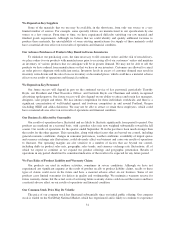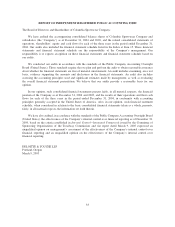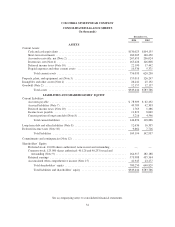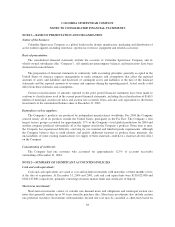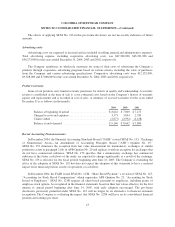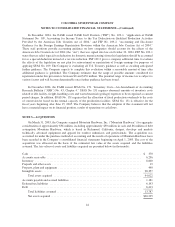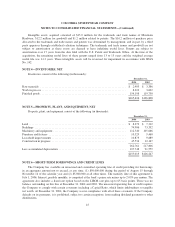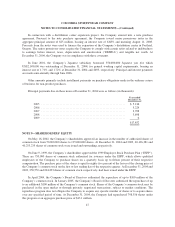Columbia Sportswear 2004 Annual Report Download - page 43
Download and view the complete annual report
Please find page 43 of the 2004 Columbia Sportswear annual report below. You can navigate through the pages in the report by either clicking on the pages listed below, or by using the keyword search tool below to find specific information within the annual report.COLUMBIA SPORTSWEAR COMPANY
NOTES TO CONSOLIDATED FINANCIAL STATEMENTS
NOTE 1—BASIS OF PRESENTATION AND ORGANIZATION
Nature of the business:
Columbia Sportswear Company is a global leader in the design, manufacture, marketing and distribution of
active outdoor apparel, including outerwear, sportswear, footwear, equipment and related accessories.
Basis of presentation:
The consolidated financial statements include the accounts of Columbia Sportswear Company and its
wholly-owned subsidiaries (the “Company”). All significant intercompany balances and transactions have been
eliminated in consolidation.
The preparation of financial statements in conformity with accounting principles generally accepted in the
United States of America requires management to make estimates and assumptions that affect the reported
amounts of assets and liabilities and disclosure of contingent assets and liabilities at the date of the financial
statements and the reported amounts of revenues and expenses during the reporting period. Actual results could
differ from these estimates and assumptions.
Certain reclassifications of amounts reported in the prior period financial statements have been made to
conform to classifications used in the current period financial statements, including the reclassification of $160.5
million of municipal auction rate notes and auction rate securities from cash and cash equivalents to short-term
investments in the consolidated balance sheet at December 31, 2003.
Dependence on key suppliers:
The Company’s products are produced by independent manufacturers worldwide. For 2004 the Company
sourced nearly all of its products outside the United States, principally in the Far East. The Company’s four
largest factory groups accounted for approximately 17% of the Company’s total global production for 2004 and
another company produced substantially all of the zippers used in the Company’s products. From time to time,
the Company has experienced difficulty satisfying its raw material and finished goods requirements. Although
the Company believes that it could identify and qualify additional factories to produce these materials, the
unavailability of some existing manufacturers for supply of these materials could have a material adverse effect
on the Company.
Concentration of credit risk:
The Company had one customer who accounted for approximately 12.5% of accounts receivable
outstanding at December 31, 2004.
NOTE 2—SUMMARY OF SIGNIFICANT ACCOUNTING POLICIES
Cash and cash equivalents:
Cash and cash equivalents are stated at cost and include investments with maturities of three months or less
at the date of acquisition. At December 31, 2004 and 2003, cash and cash equivalents were $130,023,000 and
$104,135,000, respectively, primarily consisting of money market funds and certificates of deposit.
Short-term investments:
Short-term investments consist of variable rate demand notes and obligations and municipal auction rate
notes that generally mature up to 30 years from the purchase date. Short-term investments also include auction
rate preferred securities. Investments with maturities beyond one year may be classified as short-term based on
38


